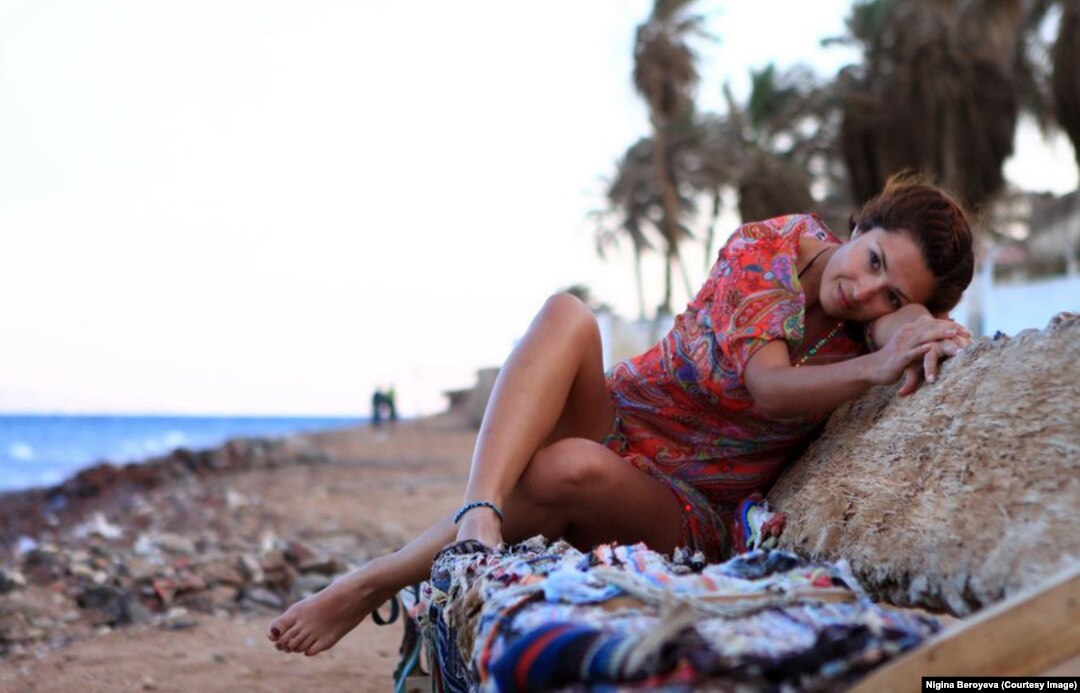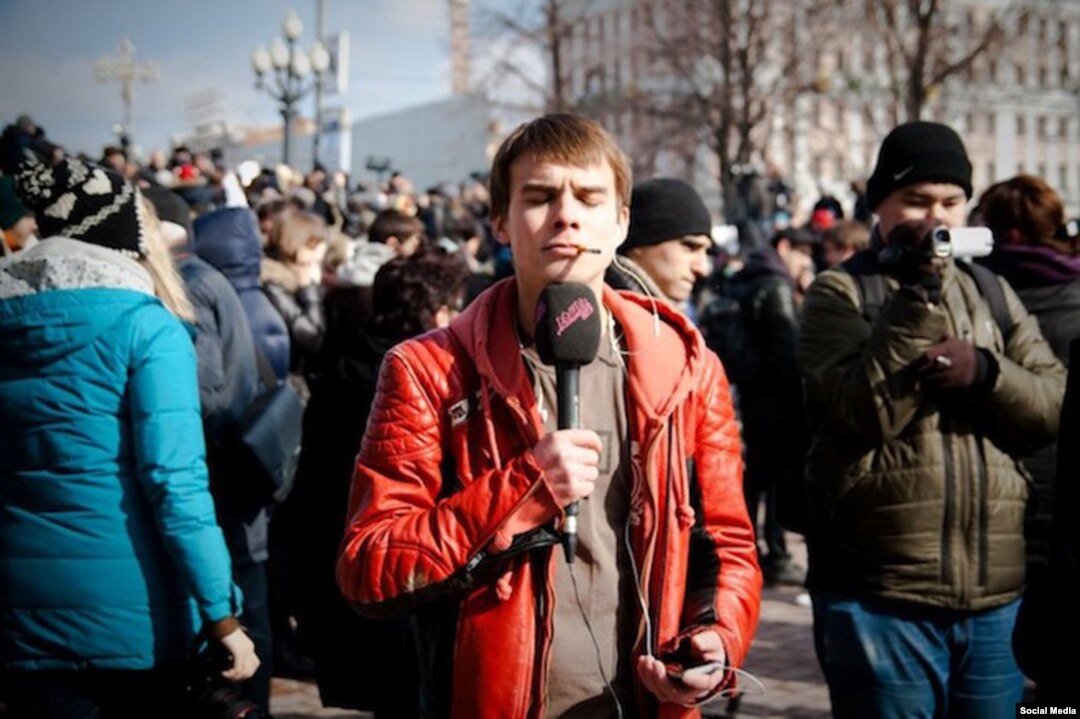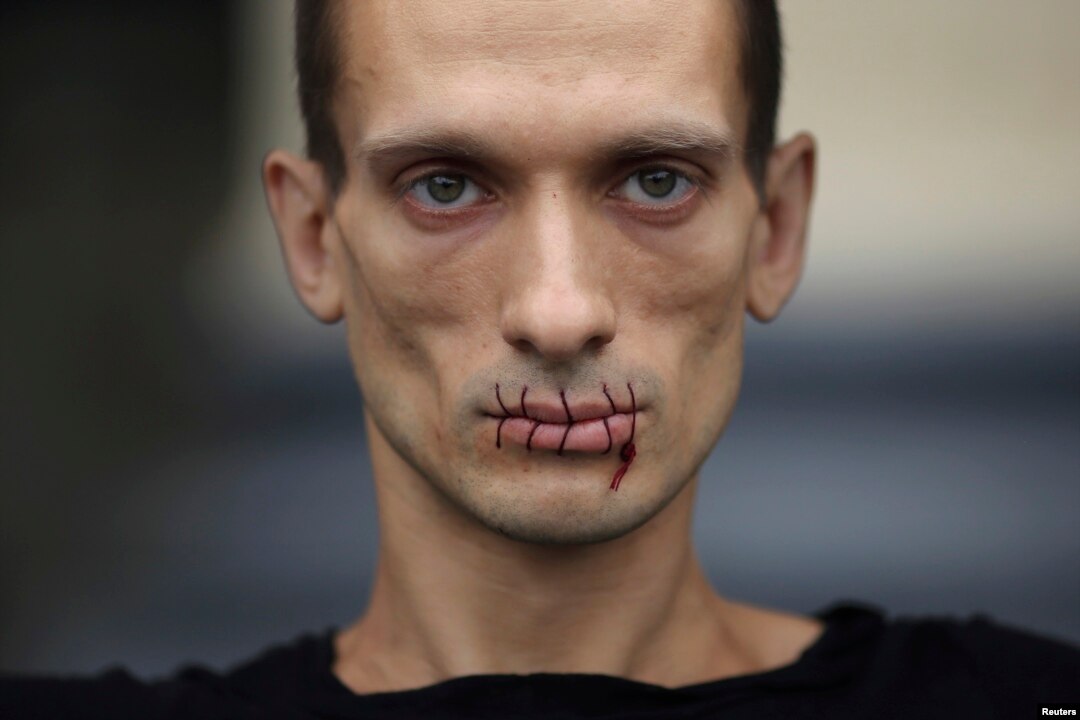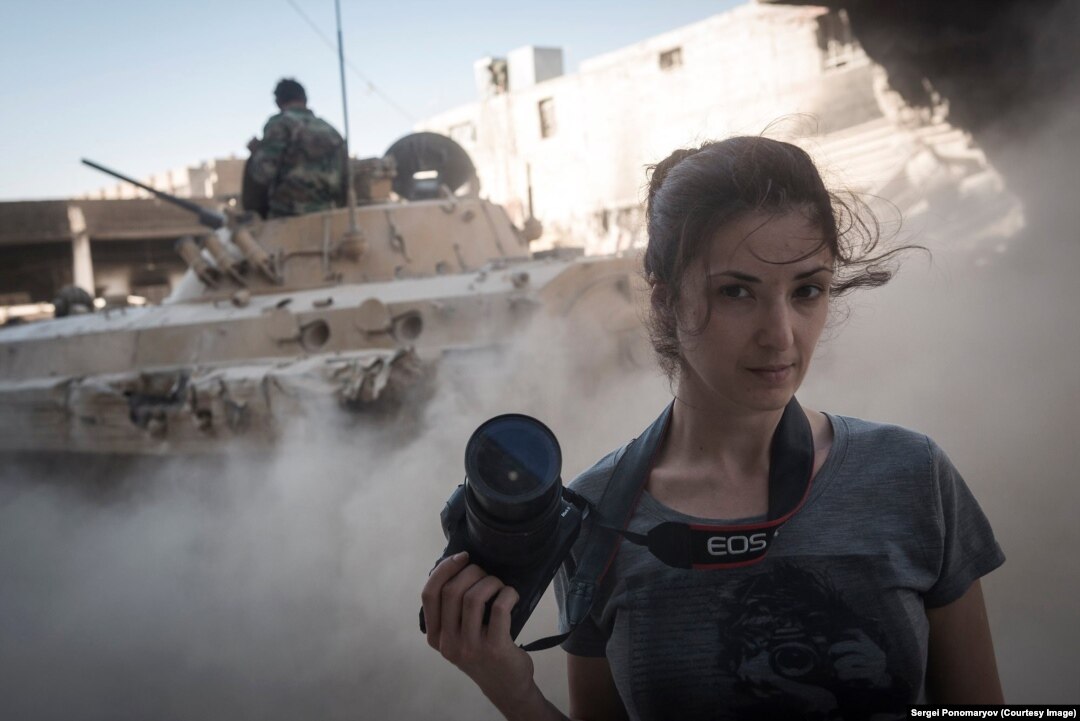Pavlensky's Threat: The Story Behind The Photo

Photojournalist Nigina Beroyeva. It was nearly 1 a.m. on a November morning when the 33-year-old found herself following the silent figure of Pyotr Pavlensky through Moscow's streets. Moments before taking the most important photo of her career, Beroyeva "had no idea what was about to happen."

Romensky, a journalist with an independent television channel in Russia. Like Beroyeva, he hadn't met Pavlensky. But one week before the artist's planned "action," Pavlensky contacted Romensky and gave him the address of a 24-hour "Chocoladnitza" cafe in central Moscow. Knowing nothing more, Romensky says, he agreed to meet the artist with his video camera. "I still have no idea why he chose me."

Pavlensky, protesting against the arrest of members of Pussy Riot in 2012. Both journalists speak highly of the artist. Beroyeva: "Even with his mouth sewn shut, he can say something the whole world hears."

Beroyeva on assignment in Syria. As the two friends chatted in a bar in central Moscow, Romensky made the snap decision to invite his friend along to the mysterious cafe meeting. Beroyeva recalls the moments in the cafe that Pavlensky "arrived after about 20 minutes and sat across the room. He didn't talk to us or order any food, just waited for about 10 minutes, then stood up and walked out, and we followed him."
The pair trailed the hooded figure through an underpass. Beroyeva remembers: "We came up and could see he was doing something against this door and then the fire started very suddenly. We only grabbed our cameras out of our bags then."
"He just stood there, he made no declarations or anything. He was very calm." Between the first and last pictures she took that night, the metadata from Beroyeva's camera shows 17 seconds passing before her camera was wrestled out of her grip by uniformed men who ran to the scene. "We were saying, 'We're journalists' over and over, but I was pressed against the wall of the building and Vladimir was wrestled to the ground."
After forcing him to the pavement, Romensky recalls the men "sitting on top of me." In an attempt to safeguard the historic footage he'd just made, Romensky tried to pull the memory card out of his camera as he struggled under the men. "While I was trying to get the SD card out of the camera, [the memory card] broke in half. I got nothing from that night, just the experience!"
Once detained, the two friends were driven away in a black Mercedes to a police station. Beroyeva remembers investigators questioning them through the night "using different interrogation techniques, sometimes they would threaten to charge us with being accomplices.... It was scary, I felt very vulnerable. I'm not used to that kind of situation." At 7 a.m., after being questioned through the night, the pair was released.
The door to the FSB, covered by a sheet of metal two days after being scorched by Pavlensky. Free, and reunited with her camera, Beroyeva was amazed to find all the images still on her memory card. Soon after her pictures were released through agencies "my phone exploded, I was getting calls from around the world. I'm not used to that either!"
Today, seven months on from that November night, Beroyeva was squashed into a Moscow courthouse where she captured this photo of Pavlensky's handcuffs being unclicked. Soon after, he walked out a free man. Beroyeva speculates this is not the end for an artist who has confounded Russian authorities. "I won't be surprised if this performance just keeps going."

